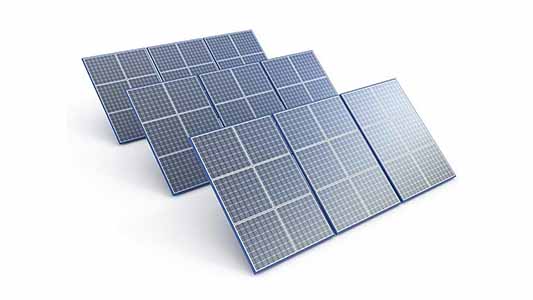Currently, the efficiency world record for a solar cell is held by HZB, an energy research centre in Germany, they created a perovskite cell that converts 32.5% of the incident solar rays into electricity. It is quite encouraging and revitalizing to see that a lot of really smart people across the globe have really been slogging to actualize the dream of a sustainable world.
Most of these are early-stage, nascent concepts and have little to no presence in commercial markets in India, they are much more fervent in the European market where customers have embraced these with much more of an open mind. Which of them would take off in the future would be quite interesting to look forward to.
Transparent solar panels

A lot of emphasis nowadays is being given to aesthetics, products can no more be just about utility, there should be an appealing quality beyond functionality. Transparent solar panels, which are being touted as the next big thing in the solar industry could be the answer to this trend. Despite all the hype, why aren’t they ubiquitous yet? The catch is that they have half the efficiency ofnormal solar panels, in the range of 10 to 12 percent. Another type of forthcoming and imminent technology is the perovskite cell. Today they have around 25% efficiency and already have entered selected markets. The reasonit is named so is that it has a material that resembles the crystal structure of a mineral called perovskite.
Building-integrated photovoltaics(BIPV) not only generate electricity but also act as the exterior, the outer layer of the structure. The surface is such that when one sees it from a distance, it doesn’t stick out like a sour thumb, they don’t look like traditional panels, and give the building an elegant look. The hindrance tothe mass adoption of this is the question of how to maintain a stable supply of energy during poor weather conditions.
Regardless, there has been heaps of enthusiasm among architects and designers about the endless possibilities of integrating these panels intoday-to-day objects like tables, chairs, and the exterior of skyscrapers. Given the available surface area of all the objects in the world, the scale at which transparent solar farms can be installed is humongous.
Agrivoltaics

Agrivoltaic farming is the act of growing crops underneath solar panels, hence utilizing the land to its full capacity and achieving complete synergy between the two production processes. It is said that India has a potential of 2.8 TW of agriPV. There are a lot of advantages to this kind of amalgamation. Because of the shading by structures, plants require less water than usual. This also leads to increased yield, land productivity, and eventual profits for the farmers.
Sand batteries

Improving the energy storage capacity is sometimes an overlooked aspect in all the fanfare surrounding renewable energy. Currently, most batteries are made of lithium. One of the upcoming technologies is a sand battery. Sand is cheap, and it is quite easy for it to retain heat. It has an efficiency of up to 95% and is quite a low-maintenance system. World’s first large-scale sand battery is situated in Finland, it has a massive 8MWh of capacity and we’ll see many more of these soon all throughout Europe.
Closure
The nature of ingenious innovation is such that it is always going through its ebbs and flows, a lot of sustained efforts are required to make such boundless leaps. It is pertinent that such leaps don’t just stay in labs, they should be evolved and become a market product that consumers could buy.
About The Author :

Sharad Gupta
The Author is the Vice President – Solar Design and Engineering (VP – Solar Design and Engineering) of Oorjan Cleantech (https://www.oorjan.com). Oorjan is one of India’s fastest-growing solar companies, co-founded by IITians and ex-bankers.












